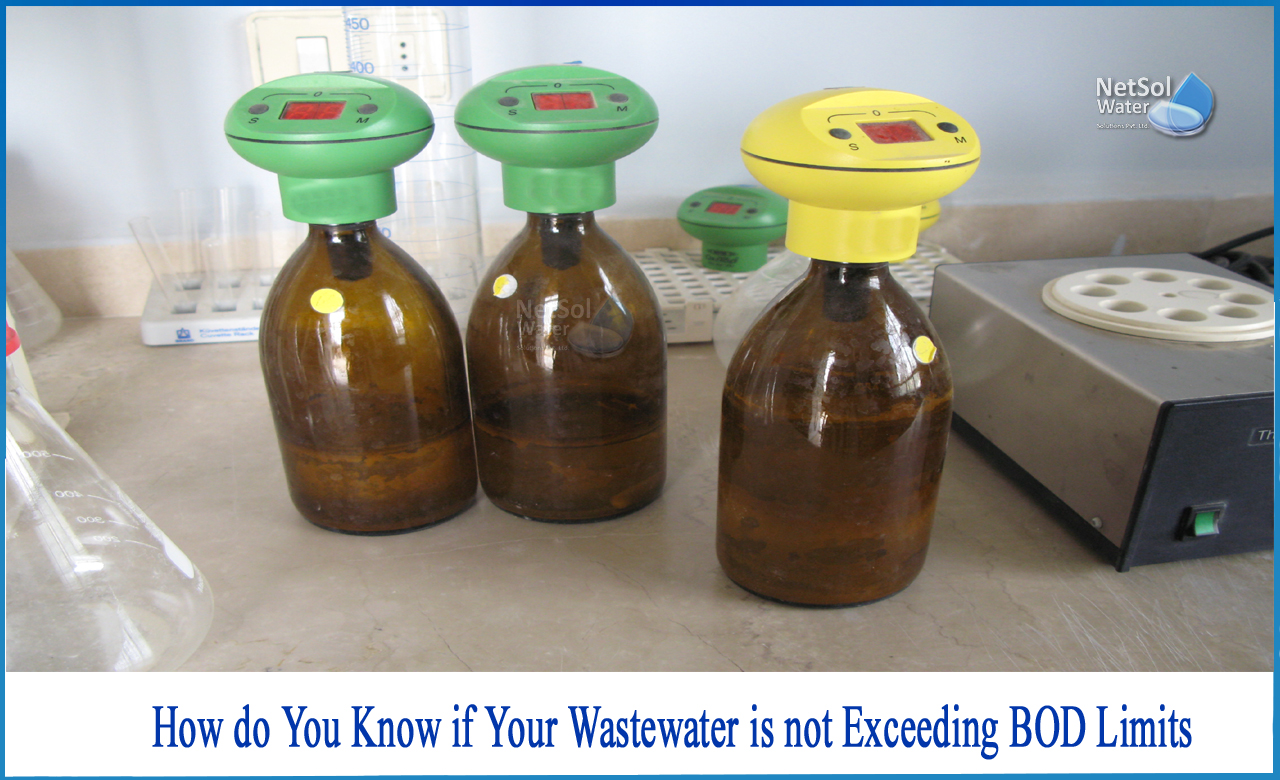How do you know if your wastewater is not exceeding BOD limits?
Managing Biochemical Oxygen Demand (BOD) levels in effluent to be compatible with local standards is a constant challenge for building managers and water treatment specialists. Failure to comply with allowable BOD levels can result in fines and environmental damage, making it a major topic in the water treatment industry. But what exactly BOD stand for?
What exactly is BOD?
The amount of oxygen consumed by bacteria and other microorganisms such as algae as they degrade organic substances in water is known as biochemical oxygen demand (BOD). BOD is found in all bodies of water, with the amount varying depending on the circumstances. Small levels of oxygen are present in all lakes and streams, which are required for fish and plants to live. Organic debris decaying in water can reduce the amount of oxygen available, which is damaging to the environment. The biochemical oxygen demand is a measurement of how much oxygen is required to decompose organic waste in water.
BOD sources
Organic materials can enter bodies of water from a variety of natural and human-made sources. Leaves, dead plants and animals, and manure are examples of BOD-producing natural waste. Wastewater treatment plants, food processing factories, and urban storm water runoff are examples of man-made sources. Because the amount of BOD in effluent varies by source and day, water treatment specialists measure BOD levels on a regular basis to ensure compliance with local standards.
What factors go into determining BOD?
The five-day BOD test, often known as BOD-5, is the most used method for determining the biological oxygen demand required to break down organic matter. The BOD-5 test method compares the amount of dissolved oxygen in a test sample over a five-day period. The amount of dissolved oxygen in the test sample is measured before it is incubated at 20°C for five days and then measured again. The amount of dissolved oxygen used is then converted to milligrams per litre and used to compute the BOD value. Once the BOD level has been determined, water treatment experts compare it to local BOD in wastewater acceptable limits.
What is the maximum amount of BOD that can be present in wastewater?
Local rules will determine how much BOD is allowed in effluent before it is dumped into a river, stream, or town. For discharge to sewer systems, permits depending on concentration are normally approximately 250-300 mg per litre, whereas direct environmental wastewater discharge is typically 10 mg per litre. Depending on your area, different ways for reducing BOD levels may be required to comply with local rules, ensuring that you're being a good partner to the environment and avoiding heavy fines.
But how can the BOD level in wastewater be reduced?
How wastewater treatment plants reduce BOD?
Depending on the level of BOD and the source, wastewater treatment plants can reduce it in a variety of methods.
The following are some of the most common strategies for decreasing BOD in wastewater treatment plants:
1: Wind-driven wave action in a facultative pond: Wave action provides for the influx of oxygen to ponds, allowing natural bacterial activities to take place.
2: Aerated ponds that agitate: Aerated ponds are similar to facultative ponds, but with the addition of air. Air can be added in the form of big or fine bubbles, which aid in the natural breakdown of BOD by bacteria. The addition of air can also aid by stirring the water and producing a wave-like appearance.
3: Activated sludge: After first treatment for insoluble BOD and other constituents in the water has been completed, activated sludge can be used to remove soluble BOD. The cleaned water is delivered to an aeration basin, where oxygen levels are kept constant so that biological processes can continue and BOD levels are reduced. Through cellular uptake and digestion, naturally occurring bacteria in combination with oxygen diminish soluble BOD. This procedure produces 0.4 to 0.5 pound of cellular biological sludge for every pound of BOD eliminated.
Sludge wasting, also known as waste activated sludge, is used to remove these biological stuff (WAS). Return activated sludge is a type of biological material that is recycled back into the aeration system to maintain a biological balance (RAS).
4: MBBR (Moving Bed Bioreactor): A method that is very similar to activated sludge but uses a media in the aeration basin. The media significantly increase the surface area, allowing for more bacterial growth in a smaller space. This also eliminates the need for activated sludge to be returned.
5: Coagulation Step: Coagulation is a technique for turning insoluble elements into water-soluble ones. To neutralise charges on particles, inorganic coagulants (such as aluminium and iron-based metal salts) and organic coagulants (such as polyamines) can be employed separately or in combination. After being neutralised, the particles are in a soluble state that can be flocculated and subsequently removed using a main treatment method like a DAF.
Conclusion
The control of BOD levels is an important part of the wastewater treatment process. It is critical for facility managers and water treatment specialists to remain vigilant and proactive in both water treatment and system maintenance.
Remember that the wastewater professionals at Netsol Water Solutions can assist you in determining your BOD levels and developing a plan for better wastewater management.
Netsol Water is Greater Noida-based leading water & wastewater treatment plant manufacturer. We are industry's most demanding company based on client review and work quality. We are known as best commercial RO plant manufacturers, industrial RO plant manufacturer, sewage treatment plant manufacturer, Water Softener Plant Manufacturers and effluent treatment plant manufacturers. Apart from this 24x7 customer support is our USP. Call on +91-9650608473, or write us at enquiry@netsolwater.com for any support, inquiry or product-purchase related query.



